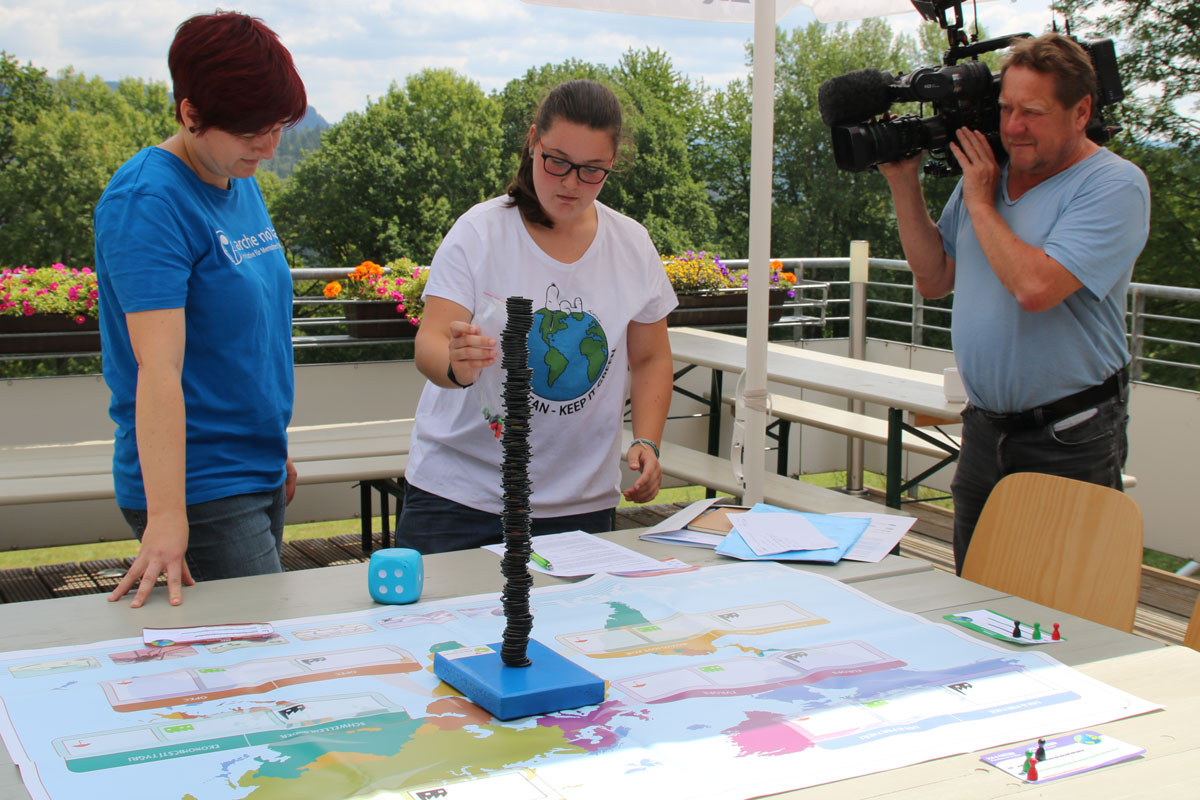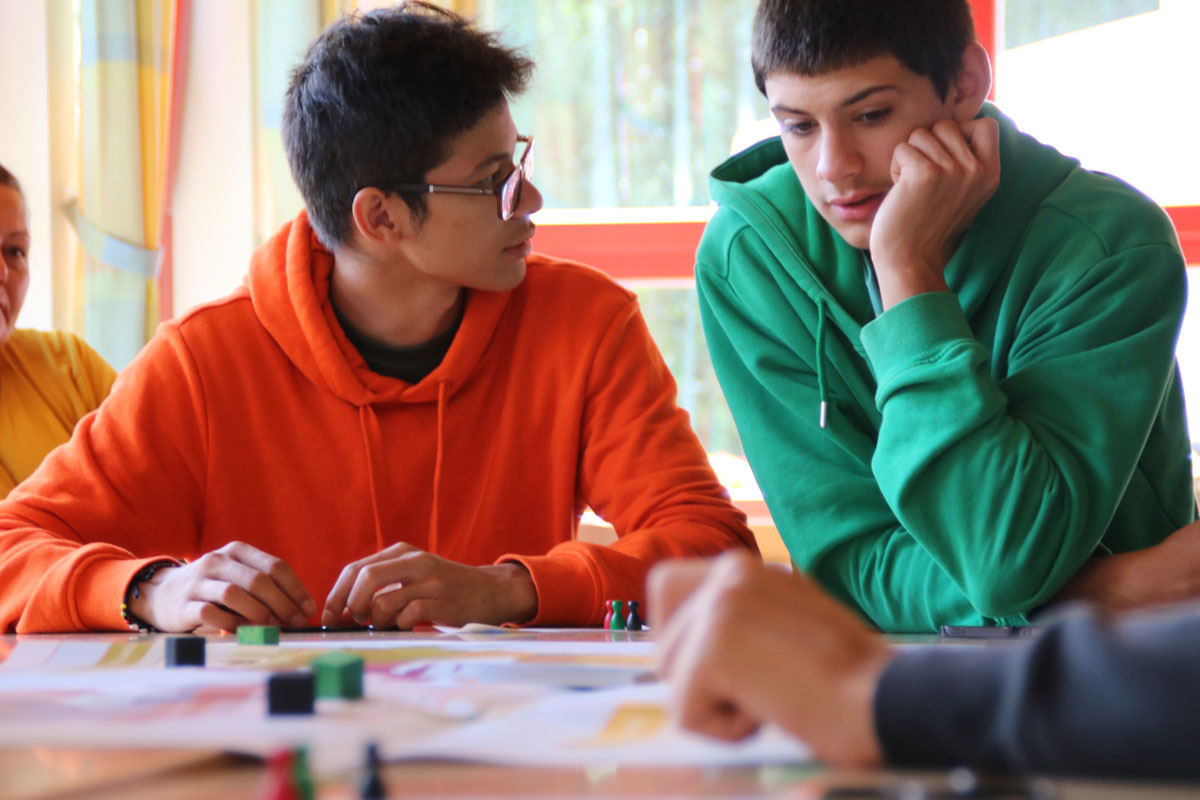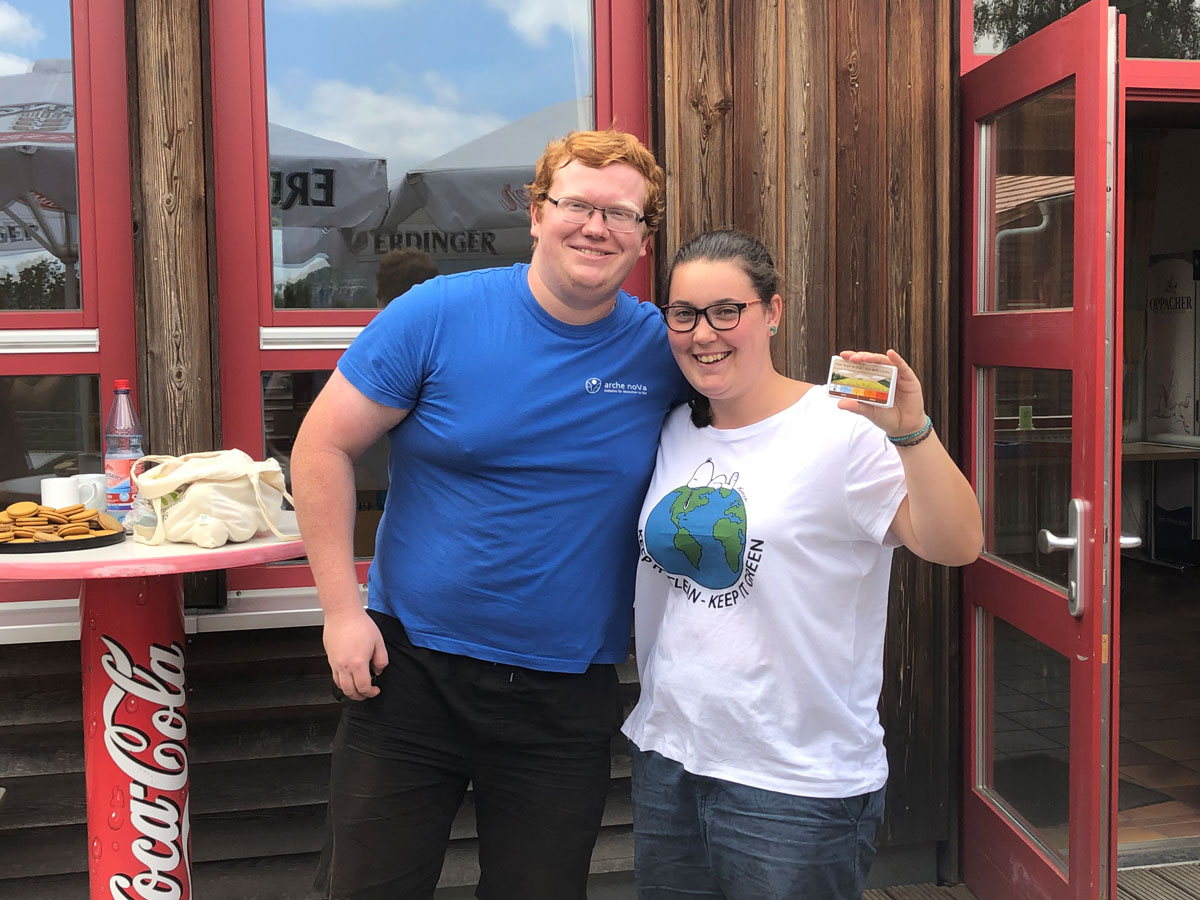What is the difference between weather and climate? "Weather is when the sun shines," replies the blonde teenager with the hooded shirt from the left corner of the table. At the same moment, the first ray of fine weather fights its way through the cloud cover over the rocks of Saxon Switzerland. Inside here, in the seminar room of the Circle Stone Department, Jan explains the difference between weather and climate and what it is about global warming, the greenhouse effect and CO2 emissions. For the 24-year-old, this commitment is more than just a job. "I enjoy teaching complex topics in a playful way," says Jan van der Kamp, who completed a voluntary ecological year at arche noVa after graduating from high school and has been leading project days ever since. Climate change is also a matter of the heart for him, who now studies transport economics. "As human beings, we have to understand that nobody in the world can survive on their own - we can only survive if we live together globally," says Jan.
And that's exactly what the climate game "Keep Cool" is all about. Three young people each represent a global player, including the USA, the oil-exporting OPEC states, the countries of the former Soviet Union or the global South with developing and emerging countries. Each actor has its own economic goals, which must be fulfilled. This is at the expense of the climate - and the players quickly realise this. The so-called carbometer in the middle of the game has already lost a momentum before it even starts. A clear step towards climate catastrophe. The reason for this was quickly explained by game director Jan: The average temperature in Germany has risen by 0.7 degrees over the past 100 years. This is due to CO2 emissions of almost nine tons per person and year. A figure that for the first time remains abstract for young people between the ages of 12 and 18. But already in the second round Susi - who quickly understood the connections - asks how to refill the carbometer.
The 17-year-old from Borna is important for environmental protection. In her everyday life she separates garbage and when she is with her mother on the weekends, they often go hiking together. The schoolgirl, who lives in a residential group near Leipzig, is aware that in international politics not everything is as simple as in the climate game. But in her role as the USA, she understood that with all the money piled up in metal rings in front of her team, it's better to build green rather than black factories. This reduces pollutant emissions and the climate can regenerate.
Jan van der Kamp was impressed by how quickly some of the young people saw through the logic and acted consistently in an environmentally conscious manner. It was true that the climate collapse could not be stopped in the first round of the game. But the end in dark red is definitely the best learning effect for the players, Jan knows. In round two, which then took place on the terrace, the carbometer remained stable and only moved in the upper yellow area - thanks to predominantly green industry and cooperative players.
Perhaps the success in the second round was also due to the international mix. For the first time, the climate game was played together in German and Czech. The occasion was the Global Camp, which took place from 14 to 19 July in the Zirkelsteinresort. The Youth Meeting had its premiere in 2018 and took place for the second time this year, financially supported by the Free State of Saxony. "The idea of the Global Camp is to combine topics of global learning with an intercultural encounter in order to experience diversity in everyday life and to break down prejudices," explains our project manager Claudia Holbe. The content deals with the topic of climate - either in the board game "Keep cool" or during a national park excursion on the tracks of the bark beetle or with bat detectors during the evening bat tour.
In between there is always time for encounters. "Every year I am impressed again how quickly the young people, who all come from difficult backgrounds, make friends and seek dialogue with each other - even across language barriers," Claudia says. The two interpreters, who are available around the clock, are in great demand. "Some things go with hands, feet or a little English, but often the young people really want to talk about their everyday life, their worries," says Petra Zahradnickova.
For the 37-year-old language mediator from the Czech Republic, it's exciting to see how every face gets a story in the course of the week. And culture or not - at the end of the day, the everyday life and concerns of the young people hardly differ from each other, no matter whether they live on this side or across the border. "Prejudices exist on both sides, and you can only overcome them by meeting people from all over the world," Petra is convinced. That is why our education consultant Claudia is planning another German-Czech youth camp next year. Because in its range, the education for lasting development, it concerns above all sustainability.
If you would like to support the work of our education department, we would be happy to receive a donation. If you have children of school age or are working as a teacher at a school yourself, then please encourage us to hold a "Keep Cool" project day in the next school year.















